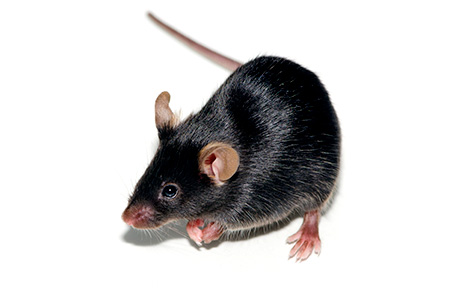 The majority of the drugs approved by the FDA for treatment of cognitive symptoms in Alzheimer's disease (AD) patients are cholinesterase inhibitors and include drugs such as donepezil, galantamine, and rivastagimine. However, the tolerated doses of cholinesterase inhibitors, such as donepezil, produce only partial improvement in memory and can have severe GI side effects. Since these medications have to be taken for prolonged durations, the limited efficacy combined with severe side effects can be problematic for AD patients and in some cases cause patients to discontinue the medication altogether. In an advance for the field, a recent pre-clinical study at Merck used a well-established mouse model of AD to address some of these issues with current standards of care for AD.
The majority of the drugs approved by the FDA for treatment of cognitive symptoms in Alzheimer's disease (AD) patients are cholinesterase inhibitors and include drugs such as donepezil, galantamine, and rivastagimine. However, the tolerated doses of cholinesterase inhibitors, such as donepezil, produce only partial improvement in memory and can have severe GI side effects. Since these medications have to be taken for prolonged durations, the limited efficacy combined with severe side effects can be problematic for AD patients and in some cases cause patients to discontinue the medication altogether. In an advance for the field, a recent pre-clinical study at Merck used a well-established mouse model of AD to address some of these issues with current standards of care for AD.
Acetylcholine, neurotransmission, and Alzheimer's disease
Acteylcholine (ACh) is a key neurotransmitter involved in communication at neuronal synapses. Neurons that use ACh for communication are called cholinergic neurons. In Alzheimer's disease, neurodegeneration of cholinergic neurons damages synaptic communication, eventually impairing the brain's communication network. This can result in a variety of cognitive symptoms observed in AD patients. While there are no treatments available that alter the course of AD, several therapeutic strategies such as cholinesterase inhibitors have been developed to help with the cognitive and behavioral symptoms in AD patients.Cholinesterase inhibitors: how do they work?
Cholinesterase inhibitors work by slowing down the process that breaks down ACh and increasing the amount of ACh available in the brain. This boosts cholinergic neurotransmission in AD patients helping these patients overcome cognitive deficits. However, as mentioned above, such drugs can have limited efficacy in patients and result in severe side effects.Developing new therapies for AD
In a recent study, Puri et al (at Merck), examined the efficacy of another type of drug called PQCA - a positive allosteric modulator (PAM) of M1 muscarinic receptors to ameliorate cognitive deficits in APPSWE mice (a.k.a. Tg2576 mice). APPSWE mice (a cornerstone in Taconic Biosciences' neuroscience portfolio of Alzheimer's models) are one of the most widely used transgenic models of Alzheimer's disease. In fact, pre-clinical studies for several of the approved AD drugs (e.g., donepezil, galantamine, and memantine) have used the APPSWE mouse to evaluate the efficacy of these drugs. These mice overexpress a mutant form of the human beta amyloid precursor protein and as they age, develop amyloid plaques - deposits of insoluble beta-amyloid (Aβ) protein. Around the time of plaque development, APPSWE mice have been shown to develop cognitive and behavioral deficits similar to that seen in AD patients, making them a workhorse platform model for screening treatments that target cognitive impairments.Aged (9-12 months old) APPSWE mice have impaired recognition memory relative to wild-type (WT) mice. In their recent study Puri et al. took advantage of recognition memory impairment in these mice to test whether administering PQCA improves recognition memory. They found that aged APPSWE mice treated with high doses of PQCA improved recognition memory just as well as efficacious doses of donepezil. However, they found that administering sub-efficacious doses of PQCA and donepezil together, resulted in significant improvement in recognition memory, similar to the level produced by efficacious dose of donepezil administered by itself.
Combination therapies may be better tolerated
These results are important for several reasons. First, they highlight that M1 positive allosteric modulators such as PQCA have therapeutic potential for Alzheimer's disease. Second, such M1 PAMs can be used as a mono therapy or in combination with an acetylcholinesterase inhibitor such as donepezil. Given the severe side-effects of donepezil, adding an M1 PAM to a donepezil regimen may allow a physician to reduce the donepezil dose administered to the patient and reduce the side effects while maintaining the needed efficacy.The results in APPWE mice are in concordance with a long line of studies in rats and monkeys highlighting the utility of M1 PAMs as a potential therapy that can be added to the arsenal of AD treatments. However, Puri et al also highlight the utility of M1 PAMs use in combination therapies with the current standard of care to ameliorate not only the cognitive defects but also potentially address the side effects observed with current treatments. How does the M1 PAM act to achieve the improvement in cognitive performance in APPSWE mice? One suggestion is that the M1 PAM may activate M1 receptors and that in turn can impact Aβ directly, potentially by decreasing Aβ accumulation. An alternate suggestion is that M1 PAMs may help attenuate circuit dysfunctions caused by Aβ accumulation.
Aβ accumulation is a key phenotype observed in APPSWE mice and is a target of many drug development efforts. Thus, the APPSWE mouse model maybe a suitable platform to address M1 muscarinic receptor based mechanistic questions in AD, and help accelerate the development of novel therapies that target aging associated degeneration and dementia in AD.
















.jpg)

.jpg)
.jpg)
.jpg)
.jpg)





.jpg)


.jpg)
.jpg)




.jpg)




.jpg)

.jpg)




